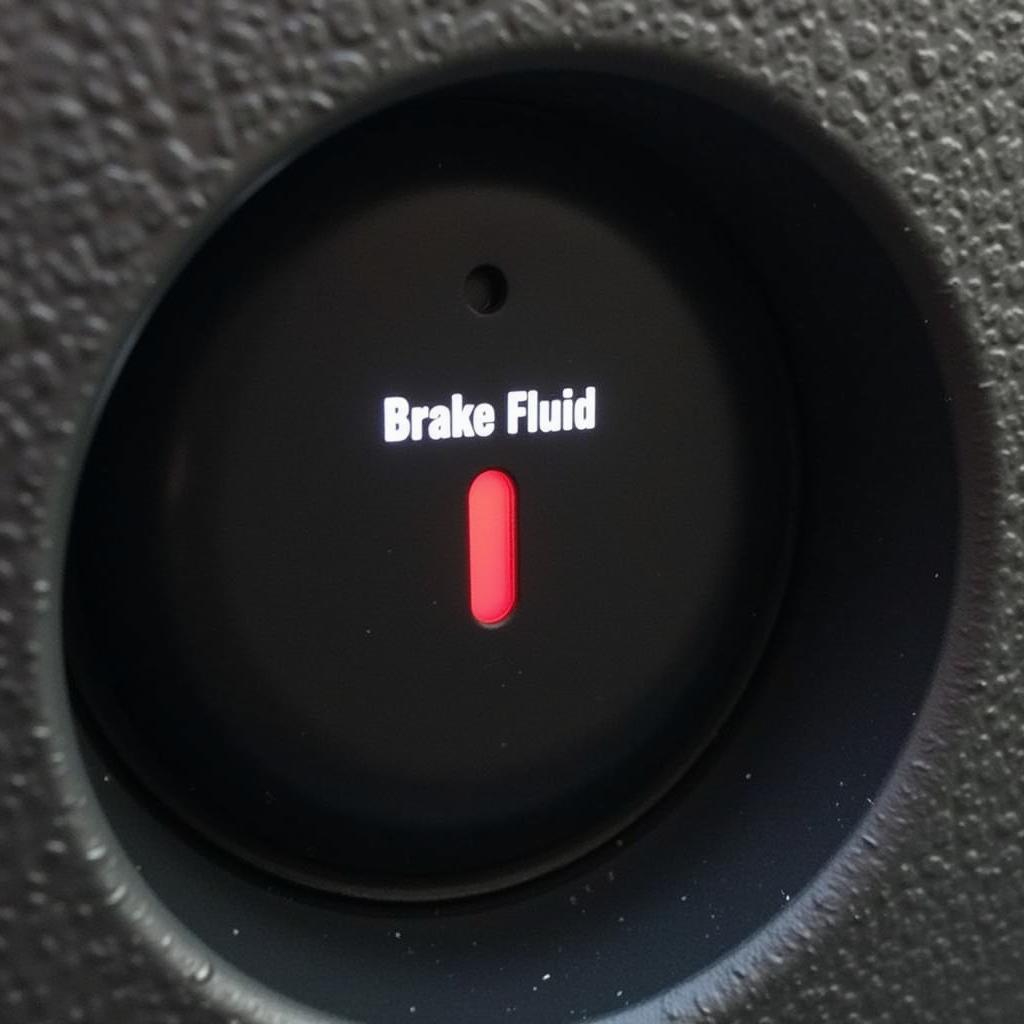The emergency brake system in your 2009 Ford Explorer is a crucial safety feature. When the system detects an issue, it triggers the emergency brake system warning light on your dashboard. This can be a frustrating experience, especially if you’re unsure what’s causing it. This comprehensive guide will delve into the common reasons behind a 2009 Ford Explorer emergency brake system warning and provide potential solutions to help you resolve the issue.
Understanding the Emergency Brake System
Before we dive into the specifics of the warning light, let’s understand how the emergency brake system in your 2009 Ford Explorer works. Unlike traditional emergency brakes that use cables connected to the rear wheels, the Explorer utilizes an Electronic Parking Brake (EPB). The EPB is activated by a switch or button on the dashboard and uses an electric motor to engage the parking brake calipers.
The EPB control module constantly monitors the system for any malfunctions. When it detects an issue, it illuminates the emergency brake system warning light on the dashboard, prompting you to investigate the problem.
Common Causes of the Emergency Brake System Warning
Several factors can trigger the emergency brake system warning light in your 2009 Ford Explorer. Here are some of the most common culprits:
1. Low Brake Fluid Level
One of the most common reasons for the warning light is a low brake fluid level. The brake fluid in your Explorer’s system is responsible for transmitting the force from the brake pedal to the brake calipers. If the fluid level drops below a certain point, it can trigger the warning light.
 Low Brake Fluid in Ford Explorer
Low Brake Fluid in Ford Explorer
This is often due to worn brake pads or a leak in the brake system. It’s crucial to check your brake fluid level regularly and top it up as needed with the correct DOT specification fluid recommended by Ford.
2. Faulty Brake Light Switch
Although it may seem unrelated, a faulty brake light switch can also cause the emergency brake system warning light to illuminate. This is because the brake light switch plays a role in signaling the EPB control module when the brake pedal is pressed.
If the switch malfunctions, it can send incorrect signals to the module, leading to a false warning.
3. Worn Brake Pads
Worn brake pads are another frequent cause of the emergency brake system warning light. As the brake pads wear down, the brake calipers need to extend further to engage the brake rotors. This excessive extension can trigger the warning light, indicating that the brake pads require replacement.
4. Faulty EPB Actuator
The EPB actuator is responsible for engaging and disengaging the parking brake calipers. If the actuator malfunctions due to electrical or mechanical issues, it can prevent the emergency brake from functioning correctly, illuminating the warning light.
5. EPB Control Module Issues
In some cases, the issue may lie within the EPB control module itself. A software glitch or an internal fault in the module can cause it to malfunction, leading to a false warning light.
“We often see cases where a simple software update can resolve issues related to the EPB control module,” says John Miller, a seasoned automotive electrician specializing in Ford vehicles. “However, a thorough diagnosis is essential to determine the root cause before any repairs.”
Troubleshooting the Emergency Brake System Warning
If the emergency brake system warning light illuminates in your 2009 Ford Explorer, it’s crucial not to ignore it. Here’s a step-by-step guide to help you troubleshoot the issue:
- Check the Brake Fluid Level: This is the first and easiest step. Locate the brake fluid reservoir under the hood and check the fluid level. If it’s low, top it up with the recommended brake fluid and inspect the system for any leaks.
- Inspect the Brake Pads: If the brake fluid level is adequate, the next step is to inspect the brake pads. Worn brake pads can often trigger the warning light. If you’re not comfortable doing this yourself, take your Explorer to a trusted mechanic for inspection.
- Scan for Diagnostic Trouble Codes (DTCs): If the issue persists, it’s best to connect an OBD-II scanner to your Explorer’s diagnostic port. This will allow you to read any stored DTCs, which can pinpoint the problem area.
- Consider Professional Diagnosis: If the above steps don’t reveal the cause or if you’re uncomfortable working on the brake system yourself, it’s essential to seek professional help. A qualified mechanic with experience in Ford vehicles can diagnose the problem accurately and perform the necessary repairs.
Conclusion
The emergency brake system in your 2009 Ford Explorer is crucial for your safety. Addressing any issues promptly and effectively is vital. By understanding the common causes of the emergency brake system warning light and following the troubleshooting steps outlined above, you can ensure your Explorer remains safe and reliable. Remember, regular maintenance and timely repairs are key to preventing unexpected breakdowns and costly repairs in the long run.
